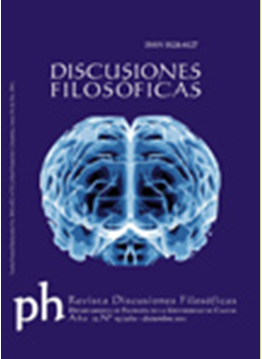Autores/as
Resumen
La pregunta que da título a este artículo puede resultar chocante. Sin embargo, la cuestión no resulta tan fácil, si nos percatamos que este debate es una controversia típica de la filosofía de la ciencia. Para llevar a cabo mi tarea, comenzaré con una referencia a Paul Thagard, procedente de su libro Filosofía computacional de la ciencia. De hecho Thagard, me permite acotar el debate entre el realismo científico típico y el realismo estructural, una nueva forma de realismo científico que procede de John Worrall a finales de los años 80, y de si éste es capaz de sobrevivir a los ataques desde posiciones antirrealistas. John Worrall se autoproclamó como una alternativa al realismo científico típico al tiempo que una forma viable de realismo. Pero, si las tesis fundamentales del realismo estructural son falsas, como trataré de mostrar en las siguientes páginas apoyándome en las teorías físicas, cabe concluir que el intento por parte del realismo estructural de resucitar al realismo, ha fracasado.
Citas
Chakravarty, A. “Semirealism”. Studies in History and Philosophy of Science. Vol. 29, No.3, 1989: 391-408. Print.
Einstein, A. Sobre la teoría de la relatividad especial y general. Madrid: Alianza Editorial, 1984. Impreso.
---. “La mecánica de Newton y su influencia en el desarrollo de la física teórica”. Mis Ideas y Opiniones. Albert Einstein. Barcelona: Bon Ton, 2000. Impreso.
Fine, A. “The natural ontological attitude”. The shaky game. Einstein, realism and the quantum theory. Chicago: University Press, 1986. Print.
Kitcher, P. El Avance de la ciencia. México: UNAM, 2001. Impreso.
Laudan, L. “A confutation of convergent realism”. Philosophy of Science. 48, 1981: 19-49. Print
Popper, K. Quantum theory and the schism in physics. London: Hutchinson, 1982. Print.
---. The myth of the framework. London: Routledge, 1994. Print.
Psillos, S. Knowing the structure of nature. Essays on realism and explanation. Houndmills: Palgrave Macmillan, 1999. Print.
Psillos, S. Scientific realism: how science tracks truth. London: Routledge, 1999. Print.
Putnam, H. Philosophical Papers. Cambridge: University Press, 1981. Print.
---. “What is realism”. Meaning and the moral sciences. London: Routledge, 1978. Print.
Rivadulla, A. Revoluciones en física. Madrid: Trotta, 2003. Impreso.
---. Éxito, razón y cambio en física. Madrid: Trotta, 2004. Impreso.
---. “Theoretical explanations in mathematical physics”. G. Boniolo (Ed.). The role of mathematics in physical sciences. Interdisciplinary and philosophical aspects. Dordrecht: Springer, 2005. Print.
---. “Two dogmas of structural realism. A confirmation of a philosophical death foretold”. Crítica 42. No. 124, 2010a: 3-29. Print.
---. “Complementary strategies in scientific discovery: abduction and preduction”. M. Bergman (Ed.). Ideas in action: proceedings of the applying Peirce conference. Helsinki: Nordic Pragmatism Network, 2010b. Print.
Sklar, L. Theory and truth. Philosophical critique within foundational science. Oxford: Oxford University Press, 2000. Print.
Thagard, P. Computational philosophy of science. Cambridge: The MIT Press, 1988. Print.
Worrall, J. “Structural realism: the best of both worlds?”. Dialectica 43. 1989: 99-124. Print.

 PDF
PDF
 FLIP
FLIP





















